So you think your favorite tree might be on the fritz? It can be hard to tell as the signs of a dying tree are quite subtle right up until it’s too late and the whole thing just keels over.
Below are 7 early warning signs that your tree might be sick or stressed. At the bottom, we have also included a 3 step program to nurse your tree back to health.
What we cover
ToggleCrown dye-back
We will start with this one because it is an early warning sign, and a dead giveaway (pun intended). Crown die-back refers to the thinning or death of the top center portion of your tree’s canopy. This is the first thing an arborist will look for when assessing a tree.
The crown of the tree is the first part to go because this is where all trees send their reserves for new growth. In general, a tree will use its energy to sustain itself and only shoot new growth when it has excess resources.
If your tree is sick it will conserve its energy and divert all available resources to where it is needed. The first place your tree diverts those resources away from is the crown where a lot of fresh growth occurs.
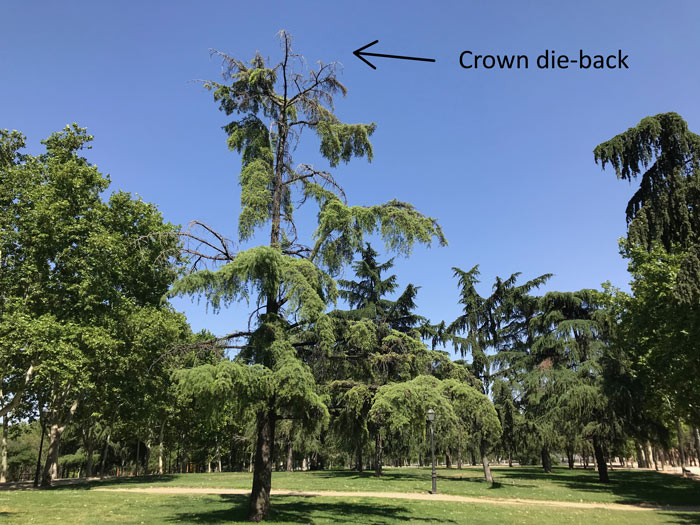
Canopy thinning
This is a little graver than crown dieback. In this case, the whole tree is struggling, and is probably something that happened all of a sudden. When you notice that your tree is not growing as thick as it should, you need to act fast identify the issue, and take steps to nurse the tree back to health.
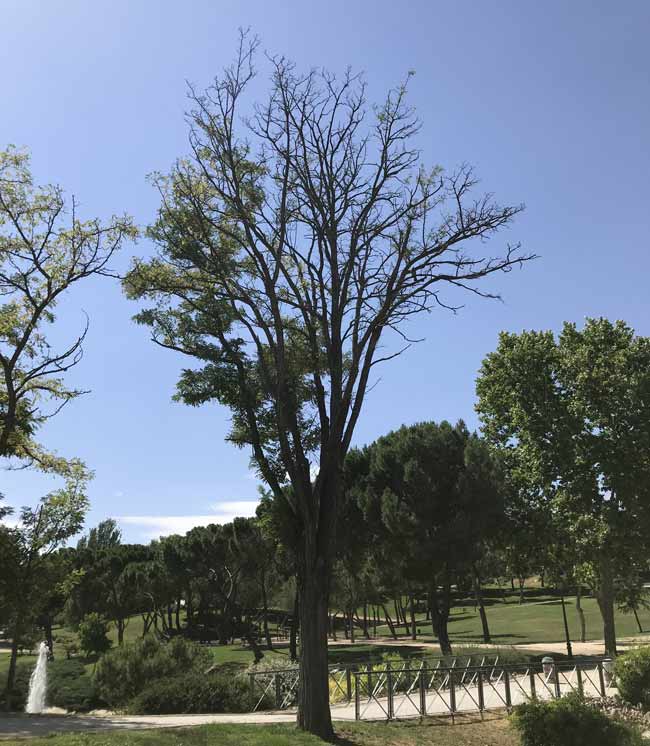
Excessive flowering
This is a little more subtle and can normally be seen on older trees that will put out copious amounts of flowers in their final years to guarantee survival by spreading their seed.
This one is a little more tricky to spot because a flowering tree will put on a good show if it received a good prune the year before and is in good health. Normally this is accompanied by a bit of canopy thinning.
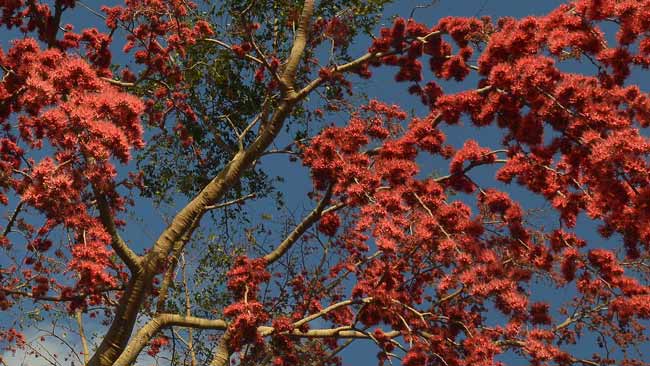
Pro-Tip
In some cases, your tree might be too far dead to recover and for safety reasons may need to be removed. To get an idea of the price, please check our tree removal cost guide here.
Leaves bloom late
On deciduous trees, sometimes you will notice that your tree is quite a bit later coming into bloom than the rest of the trees in the area. If it is just by a week or two, then it is nothing to worry about, but if it is a month late, then you might have an issue.
A good reaction to noticing something like this is to get a second opinion from a certified arborist and possibly get some remedial pruning done if that is what they suggest.
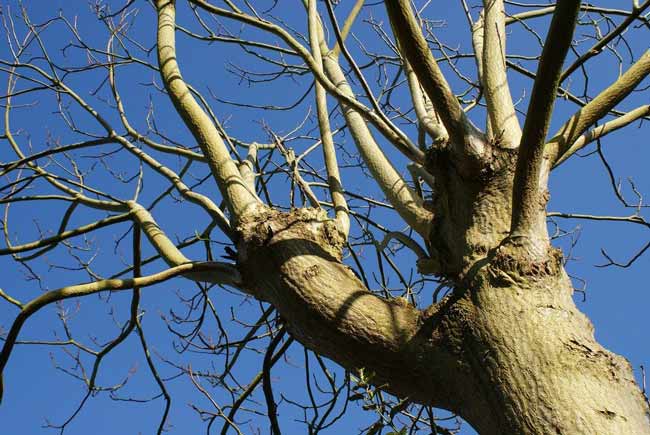
Leaves fall too early
The opposite is also true for deciduous trees. If they are struggling, the first turn in the weather will have them turning a lot quicker than the other trees. Most of the time this goes unnoticed as people are more hanging out for spring than autumn.
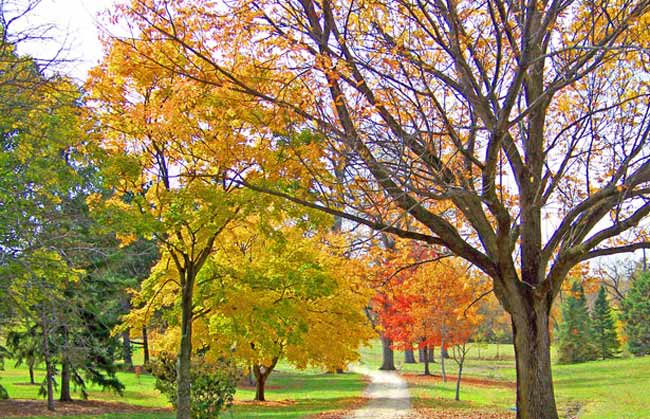
Cracking bark
This is not always a sign that the tree is sick, but it can lead to it making a turn for the worst. Cracking bark can occur for various reasons like after frost, rapid growth spurts, and the bark could not keep up, and during extreme drought.
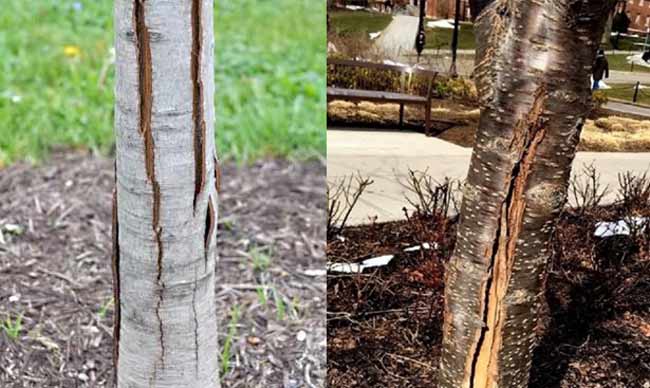
Bracket fungi
Bracket fungi grow on trees when there is dead and rotten timber inside. It’s a sure-fire sign your tree is in trouble and most likely past the point of no return.
If the fungi are found on a single branch and are isolated, maybe it is an anomaly, but if you spot it on the main trunk, then you are in need of a certified arborist to inspect the tree and give a diagnosis. The tree may need to be cut down.
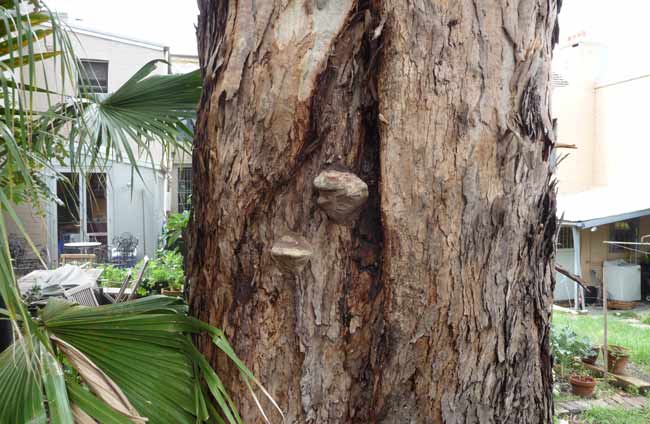





How to save a tree once it starts to die
There are several things you can do to turn things around for your tree. It does depend on how far it is gone. Once a tree is dead, there is nothing you can do to bring it back. There are also times when it is so far gone that it just becomes a safety risk.
Here are 3 things you must do to ensure the survival1 of your tree.
Diagnose the problem
Sometimes the tree is just getting old and needs some TLC, but in most cases, a sudden change in environment can have grave effects on a tree’s health. Sudden does not always mean overnight but can be something subtle such as a drought that eases in over time.
Try to think of anything that could affect the way it takes up water such as compacted soil in drip line, paving or cement over roots, installation of the drain which diverts water supply, driving the car on lawn compacting soil, oil leaks, or anything else that can affect the tree.
Once you find it you need to try and stop mitigating the issue
Heavy prune
Once the cases of the issue have been identified (if you cannot see an obvious cause, then this step will help anyway, so just proceed).
Why do we want to prune? – By removing a large amount of foliage, you are removing a burden on the tree. Just say the tree has 10 branches and is using 100% of its available energy to keep the branches fed. If you were to remove just 3 branches, you have reduced the load on the tree by 30% and allowed it to divert its energy to the rest of the tree.
How much to take off? – Like the above example, I suggest taking off 30% of the tree’s foliage. Your local tree-cutting service will be able to best advice, but basically, you need to either do a canopy lift or a thinning prune. I don’t suggest a crown reduction just removing small outer branches. Remove some large burdensome branches.
Watering and fertilizing program
A tree survives on 4 things, sunlight, water, air, and nutrients. Sunlight and air should be a given, so we need to make sure your tree is getting a good amount of water and nutrients. You can opt to use chemical fertilizer or go organic, but either way, I do suggest you consult your local arborist to find what best suits your particular tree.
- M.F. Heimann, G.L. Worf, (2019) Shade Trees Disorder: Decline, Dieback, or Early Senescence <https://hort.extension.wisc.edu/articles/shade-trees-disorder-decline-dieback-or-early-senescence/> Accessed: 28-02-2024



